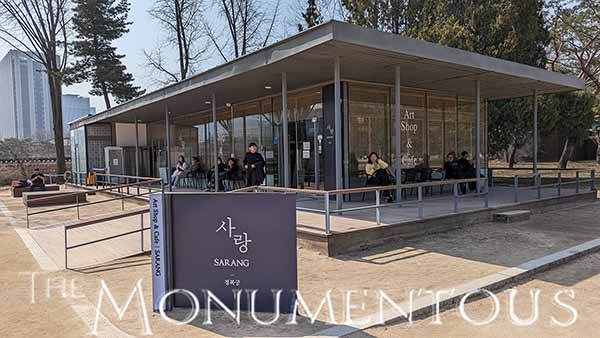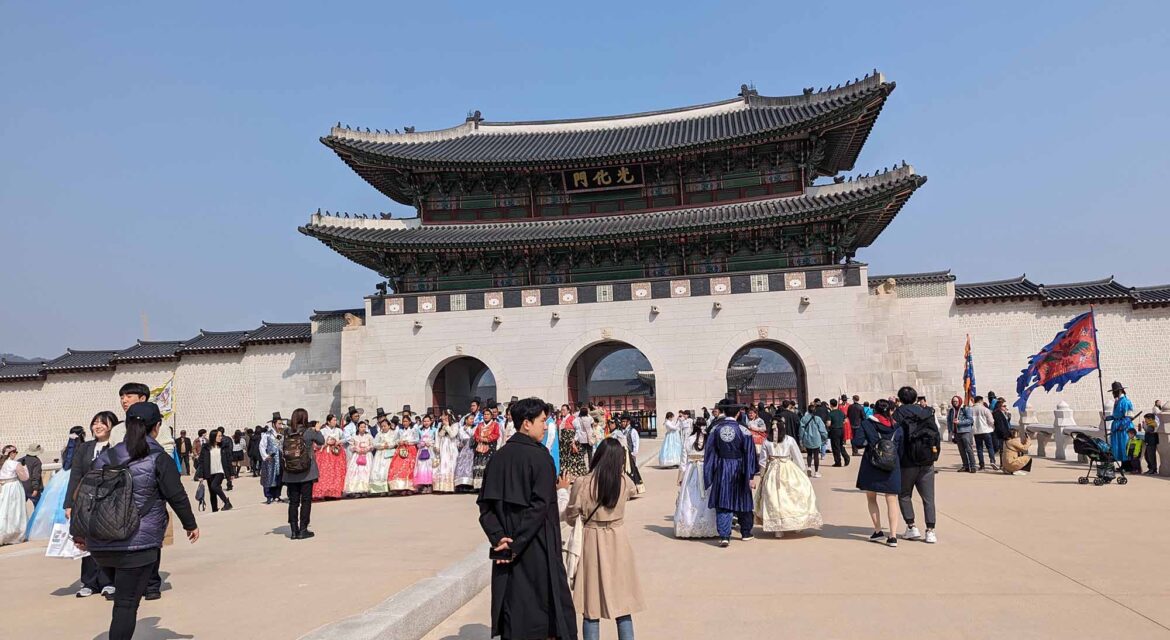 Built in the heart of Seoul in South Korea and surrounded by Mount Bugaksan and Mount Namsan, Gyeongbokgung Palace is one of the most notable landmarks in the entire country. This importance is due to the size and scope of the landmark but has been realized thanks to an effort to preserve and celebrate the significant impact that it represents on the past and future of the entire nation.
Built in the heart of Seoul in South Korea and surrounded by Mount Bugaksan and Mount Namsan, Gyeongbokgung Palace is one of the most notable landmarks in the entire country. This importance is due to the size and scope of the landmark but has been realized thanks to an effort to preserve and celebrate the significant impact that it represents on the past and future of the entire nation.

“Brilliance and Fortune”
 Built in 1395, Gyeongbokgung Palace is a walled palace that is the largest of the Five Grand Palaces built by the Joseon dynasty. The name “Gyeongbok” means “brilliance and fortune.” It is said to be the specific location where a script for writing the Korean language was created and distributed.
Built in 1395, Gyeongbokgung Palace is a walled palace that is the largest of the Five Grand Palaces built by the Joseon dynasty. The name “Gyeongbok” means “brilliance and fortune.” It is said to be the specific location where a script for writing the Korean language was created and distributed.
The site and the majority of the buildings that it contains were mostly destroyed in the 16th century, after which it was abandoned for over two hundred years. In the 19th century, all of the palace’s rooms were restored, much of which were subsequently discarded by Imperial Japan during its occupation of Korea in the 20th century. Starting in the 1990s, the walled palace complex has been gradually restored to its original form by the South Korean goverment.
Taking up about 410,000 square meters (4,414,000 square feet), various original 19th-century buildings survived both the Japanese rule of Colonial Korea and the Korean War, including the Imperial Throne Hall (Geunjeongjeon Hall), Gyeonghoeru Pavilion, Sujeongjeon Hall, Donggung, and various other halls. These structures are just a few of the many landmarks on the site that represent important elements of the culture and history that define the nation of Korea.
The most notable feature of Gyeongbokgung Palace is arguably the Gwanghwamun Gate, which forms the south entrance to the attraction and has become an icon of Seoul. The other three gates are Sinmumun, Geonchunmun, and Yeongchumun. The site and the wooden gatehouse were extensively damaged over the centuries but an effort to restore Gwanghwamun to its original wooden specifications was completed in 2010. These landmarks have facilitated a powerful economic impact on the site and region.

Engaging with the Culture
 Two museums are located on the grounds of the palace, highlighting the connection the site has enabled the city community in the present. The National Folk Museum of Korea and the National Palace Museum of Korea celebrate the culture of the past and present of the entire nation.
Two museums are located on the grounds of the palace, highlighting the connection the site has enabled the city community in the present. The National Folk Museum of Korea and the National Palace Museum of Korea celebrate the culture of the past and present of the entire nation.
These features have compelled engagement with tourists who have replaced the thousands of government officials and servants who once lived on these grounds. Visitors dress up in traditional clothes, highlighting the many ways audiences can engage with the space. It is also a key feature in various maps and guides to the city and nation.
With an admission fee to enter as well as features like Starlight Tours that include an evening visit of 10 locations across the palace, the landmark compels engagement on multiple levels. A gift shop is contained on the site, providing an additional direct means of revenue to further highlight the connections between the past and future of the space and region.

An Icon of South Korean
 Recognized as one of the most iconic sights in all of Korea thanks to its long and storied history, Gyeongbokgung Palace has been mentioned as one of the most scenic locations in Seoul. This recognition is the result of an active effort to celebrate the history and legacy of the nation that could have otherwise been lost, highlighting the benefits that can be achieved when the history and culture of a nation is preserved and celebrated in such a notable way.
Recognized as one of the most iconic sights in all of Korea thanks to its long and storied history, Gyeongbokgung Palace has been mentioned as one of the most scenic locations in Seoul. This recognition is the result of an active effort to celebrate the history and legacy of the nation that could have otherwise been lost, highlighting the benefits that can be achieved when the history and culture of a nation is preserved and celebrated in such a notable way.

